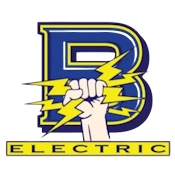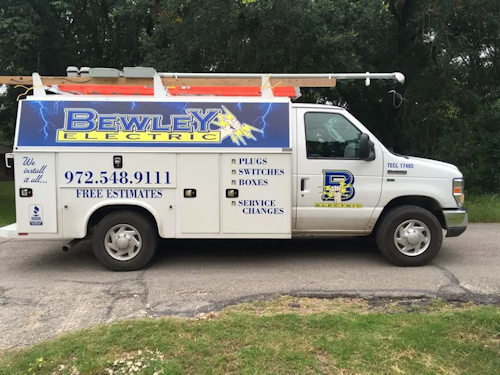Your Home Electrical Safety Checklist From Bewley Electric
Code-Compliant And Worry-Free
A safe home starts behind the walls. Outdated wiring, overloaded circuits, and loose connections can quietly raise fire risk, inflate utility bills, and leave your family vulnerable during storms. Since homes evolve, new appliances, remodels, and smart devices, your electrical system has to keep up. Bewley Electric helps McKinney and North Texas homeowners stay code-compliant, efficient, and protected with licensed inspections, upgrades, and repairs that prioritize safety. Use this 10-point checklist to spot early warning signs, then partner with our team to correct issues the right way.
Why Code Compliance Matters (And Saves Money)
Electrical code isn’t just red tape, it’s a blueprint for fire prevention, shock protection, and reliability. Code-compliant systems trip correctly, bond and ground properly, protect sensitive equipment from surges, and route power where it’s needed without overheating conductors. The result: fewer emergencies, fewer surprises on utility bills, and better resale value when it’s time to move.
The 10-Point Home Electrical Safety Checklist
1) Service Panel Health
Open the panel (carefully) and look for rust, scorch marks, buzzing, or warm breakers. Frequent tripping or double-tapped breakers are signs you may need panel maintenance or an upgrade. If your panel is decades old, it likely wasn’t designed for today’s loads (HVAC, EV chargers, home offices).
2) Grounding and Bonding
Proper grounding shunts dangerous fault current to earth and helps surge protection do its job. Look for secure, corrosion-free connections on grounding electrodes and bonding jumpers. If you’re unsure, schedule a licensed inspection, this isn’t a DIY area.
3) GFCI and AFCI Protection
Kitchens, bathrooms, laundry, garages, and exterior outlets should have GFCI protection. Bedrooms and many living areas now require AFCI (arc-fault) protection. Test monthly using the built-in buttons; replace units that fail to trip or reset.
4) Outlet Condition and Coverage
Loose outlets, cracked plates, or heat discoloration indicate poor connections. Add outlets where you rely on power strips or daisy-chained extension cords, overloading can overheat conductors and plugs. Tamper-resistant receptacles add child safety.
5) Wiring Integrity
Aluminum branch wiring, brittle insulation, or mixed-and-matched wire gauges can create hot spots. If you see wire nuts outside junction boxes, or open splices in attics or crawl spaces, call a pro. All splices must be within covered boxes with proper strain relief.
6) Kitchen and Laundry Loads
High-demand appliances (microwaves, dishwashers, disposals, electric dryers) should be on dedicated circuits. Shared circuits can cause nuisance trips and premature device failure. An inspection can map your circuits and recommend corrections.
7) Lighting Safety and Efficiency
Flicker, buzzing dimmers, or frequent bulb failures point to wiring or fixture issues. Consider LED retrofits and modern dimmers for comfort and energy savings. Outdoor lighting, eave lights, and landscape circuits should be weather-rated and GFCI-protected.
8) Surge Protection Strategy
Whole-home surge protection at the panel plus point-of-use protection for sensitive electronics is the modern baseline. It helps protect HVAC boards, appliances, routers, and entertainment systems from grid events and lightning-induced surges.
9) Smart Home and EV Readiness
Smart switches, thermostats, and security gear draw little power but still demand stable, code-compliant wiring. If you’re adding an EV charger, you’ll likely need a dedicated 240V circuit and sometimes a panel capacity review to keep everything safe and smooth.
10) Outdoor and Wet Locations
Use in-use (bubble) covers, weather-resistant receptacles, and proper conduit for exterior runs. Hot tubs, pools, and boat lifts require specialized bonding and GFCI. If you’re adding backyard outlets or lighting, have Bewley Electric confirm the right protection.
When To Call A Licensed Electrician
-
Breakers trip repeatedly or feel warm to the touch.
-
Outlets spark, buzz, or smell burnt.
-
Lights dim when large appliances start.
-
You’re planning a kitchen/bath remodel or adding an EV charger.
-
Your home is 25+ years old and hasn’t had a recent electrical inspection.
Bewley Electric provides thorough, code-aware diagnostics and transparent options, repair vs. replace, add vs. reconfigure, and immediate needs vs. long-term planning. You’ll get a clear scope and pricing before work begins.
Simple Upgrades That Pay Off
-
Panel Tune-Up or Upgrade: Eliminates nuisance trips, adds capacity, and improves safety.
-
GFCI/AFCI Coverage: Brings high-risk areas up to code and reduces fire/shock risk.
-
LED + Smart Controls: Enhances comfort, cuts waste, and modernizes your home.
-
Whole-Home Surge Protection: Safeguards big-ticket systems and electronics.
-
Dedicated Circuits: For microwaves, disposals, laundry, HVAC, and EVs.
The Bewley Electric Difference
-
Licensed, code-compliant work done right the first time.
-
Transparent 4-step process: diagnosis, upfront quote, licensed install, final testing.
-
Respect for your home: clean work areas, clear communication, punctual arrival.
-
Future-ready guidance: we plan for today’s needs and tomorrow’s devices.
Ready for peace of mind? Book a safety and code compliance inspection with Bewley Electric and get a prioritized plan for your home, so you can enjoy comfort, confidence, and lower risk year-round.
👉 Schedule your visit at BewleyElectric.com or call to request a free quote.

